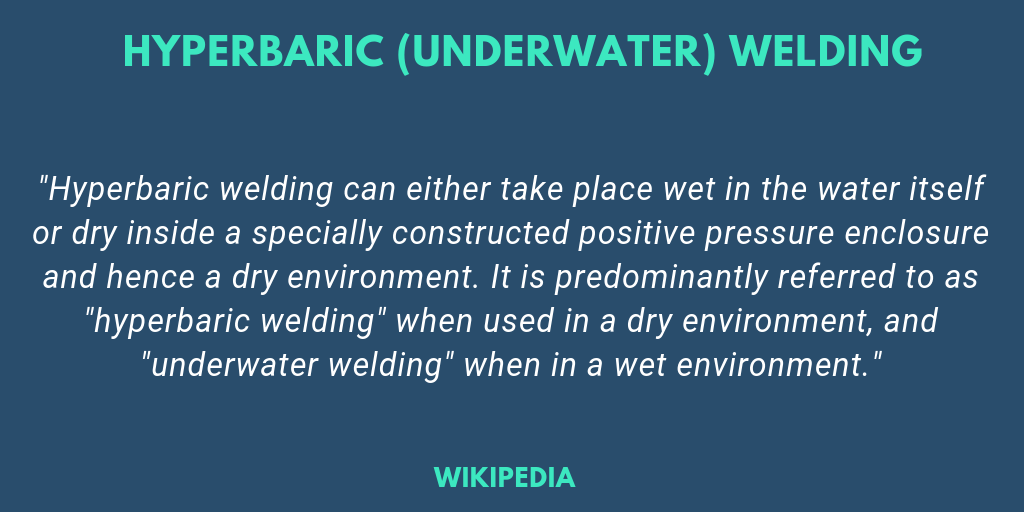What are the different types of welding?
Welcome to your one-stop-shop guidebook to the different types of welding processes, certifications, and careers.
In the following post, we’ll cover the basics for each type of welding method. This includes everything from oxy acetylene brazing to Stick welding to underwater welding.
Additionally, you’ll find different types of welding equipment reviews, safety tips, and schools near you.
Different Types of Welding Processes:
Table of Contents
- Arc Welding Basics
- The Main Types of Welding (Including Welding Tips)
- Underwater Welding (Hyperbaric Welding)
- Soldering vs Brazing
- Types of Welding Certification & Welding Schools Near You
- Different Types of Welding Careers
The 6 Main Types of Welding
Altogether, there are 6 most popular different types of welding processes. We’ll get into details about each kind below, but here’s a brief overview:
- Gas Metal Arc Welding (GMAW)/Aluminum Welding (MIG)
- Flux Cored Welding
- Shielded Metal Arc Welding (Stick)
- GTAW/Tungsten Inert Gas Welding (TIG)
- Oxy Acetylene or Gas Welding
- Plasma Arc Welding
Arc Welding Basics
Sometimes the term “arc welding” can be confusing, which is why we’ve designed TFC’s Official Arc Welding Basics Cheat Sheet. First, we’ll start with a good definition of arc welding. Then we’ll move on to arc welding uses, the different types of arc welding, and tips and techniques. We’ll also cover tricky comparisons, like Arc vs Mig welding. Basically, everything you’ve ever wondered about arc welding is here, in one easy spot!
Simply put, arc welding is a type of electric welding that permanently fuses together base metals by forming an arc between the metals and the electrodes.
An electrode is a type of wire that connects the welding machine to the metals you’re melting together. The electrode may be consumable or non-consumable.
What’s the difference between consumable and non-consumable electrodes?
Commonly, consumable electrodes have more than one purpose: they contain a filler metal, which liquefies throughout the process. This is common in Stick and MIG welding, and the filler metal can cause quite a mess when it melts! Typically, these are the preferred methods.
On the other hand, TIG welding uses non-consumable electrodes. One major benefit is that this method is much cleaner and creates the most precise welds. However, it’s also the most difficult, and it takes the most time. In general, TIG is for welding extremely thin sheets of stainless steel, aluminum, and other non-ferrous materials.
In this process, filler metal goes to the weld through a tungsten rod, which is a separate part from the electrode. Adding the filler metal separately makes the process very time consuming.
Video Overview: All Types of Welding
Metal Inert Gas/MIG Welding Basics
One of the most popular types of welding for beginners and experts is MIG welding. It’s also the easiest type of welding, in most people’s opinions.
MIG welding stands for Metal Inert Gas welding, or Gas Metal Arc Welding (GMAW). Often, the term is used interchangeably with aluminum welding. MIG is best for joining together thinner aluminum materials.
To summarize, MIG welding is the method for joining aluminum, steel, and other non-ferrous metals. It requires steady electricity for heat production, an electrode for joint filling and shielding gas to protect your weld from air.
What gas do you use for MIG welding?
As a general rule, helium and argon gases work well for metals that don’t contain iron. For example, while aluminum welding, you’ll probably want to use argon welding gas. However, that wouldn’t work well for steel.
Sometimes people use carbon dioxide, but this can be messy. Also, it doesn’t have a reputation for producing strong welds.
Can I do MIG welding without gas?
Well, there’s a name for MIG welding without gas: Flux Cored welding. (Keep reading for more info about Flux Core Welding.)
That being said, you can use a MIG welding to do Flux Cored welding. Simply make sure to use a flux core wire.
Check out this video for Lincoln Electric’s guide to choosing the best MIG welding gas.
Advantages & Disadvantages of MIG Welding
Like all of the methods, Metal Inert Gas welding has its pros and cons. By and large, MIG welding has a lot of advantages. First of all, it’s the easiest type of welding process, which makes it great for beginners. It’s also the fastest method.
On the other hand, MIG welding doesn’t work for materials thicker than 1/18″. Also, it doesn’t work in overhead or vertical welding positions.
Important Mig Welding Supplies
In order to use the gas metal arc method, you’ll need the right MIG welding supplies. These include a MIG welding gun, torch, and the correct welding wire types.
Here are some reviews to make sure you choose the best MIG welding supplies for the money:
- Different Types of Welding Machines: You Need a MIG Welder If…
- How to Find the Best Cheap Mig Welders Under $500
- The 12 Top Rated Welding Helmets for MIG
- Best Mig Welders Under 1000: The Top 9 in 2019
For more about MIG, check out The Ultimate Guide to MIG Welding for Beginners: Tips & Tricks.
Flux Cored Welding
Another one of the different kinds of welding methods is flux cored welding. Simply put, this involves feeding a tubular electrode containing continuous voltage and flux.
Notably, you can use Flux Core Wire in a MIG welding machine. This welding method is best in construction, when you need to deeply penetrate soiled or rusty materials.
Flux Core Welding vs MIG
Here, we will just state some of the differences between flux core welding and mig welding:
- Unfortunately, Flux core welding produces more spatter than Mig welding.
- Flux core welding can penetrate thicker metal, while Mig welding only penetrates thin steel.
- The end product of Mig welding is usually neater than that of Flux core welding.
- Flux core welding does not really require that you thoroughly clean up your metal. This process can be time-consuming.
- Using flex core, welding can be done in vertical and overhead positions, unlike Mig welding that is too fluid to take on other positions. When combined, however, your metal becomes more solidified and easier to welding in several positions.
- Because of Mig welding’s sensitivity to wind, it is usually done indoors. Flux core, however, can be done outdoors and is more often used when there is a welding job.
What is Stick Welding?
Stick welding is a type of arc welding that uses non-consumable electrodes called stick welder rods.
Of all the different kinds of welding, Stick welding is one of the most versatile. Also, it’s budget-friendly and useful for both industrial and household projects. Other names for this welding method are Shielded Metal Arc Welding (SMAW), or Arc Welding for short.
Video: What is STICK Welding? (SMAW)
For a brief Stick welding definition and overview, check out this video:
Advantages & Disadvantages of Stick Welding
Stick Welding is a portable, cost-effective, and versatile welding method that’s great for welding aluminum. Other benefits include that it’s good for beginners and home projects, and it penetrates thick, dirty materials quite well.
Some of the disadvantages are that it’s rather limited; it only works on steel, aluminum, and cast iron. Additionally, it doesn’t work for metals thinner than 1/16″.
For the best reviews of Stick welding supplies, check out:
- You Should Buy a Stick Welder If…
- Best Stick Welder Reviews
- Auto Arc Welding Helmet
- Best Stick Welding Gloves
- How to Find the Best Cheap Stick Welder Under $200 (Reviews)
For an in-depth guide to Stick Welding for Beginners, check out Stick Welding Tips for Beginners.
What is TIG Welding?
One of the other types of Arc welding is Tungsten Inert Gas (TIG) welding.
- TIG Definition: First, it’s important to note that TIG is an acronym for Tungsten Inert Gas welding, or Gas Tungsten Arc Welding (GTAW). Sometimes it’s even called “Heli-Arc” Welding. (Source: Miller Article Library)
- Types of Welding Gases: Typically, argon gas is used in Tungsten Inert Gas welding. However, any type of inert gas may be used.
- Power Source: TIG welding requires a constant current power source, either AC or DC.
- TIG vs MIG vs Stick: In comparison to Stick and MIG welding, TIG welding is the hardest to the learn and the slowest welding process. However, it performs the cleanest welds.
- Versatility: Yet another way TIG welding stands out from MIG and Stick is that it’s great for almost all types of materials.
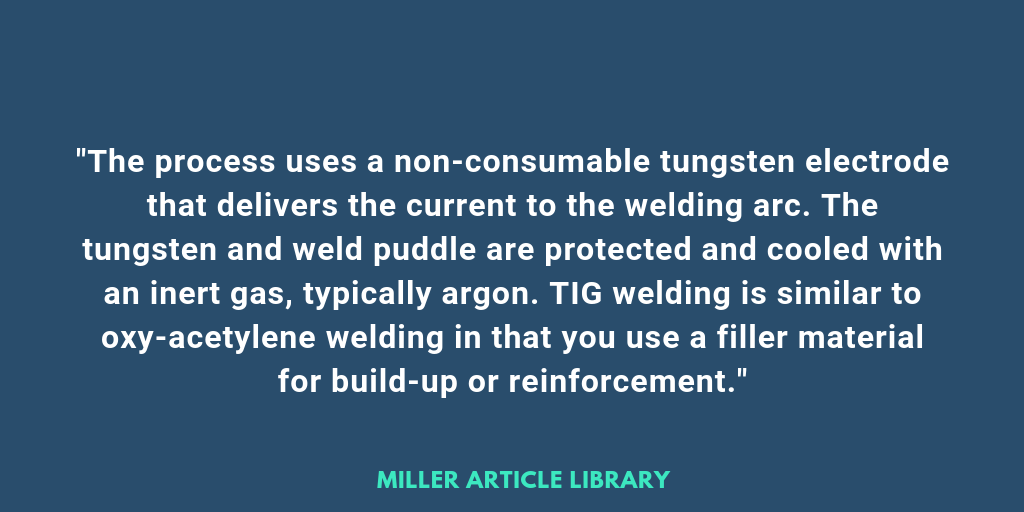
Advantages & Disadvantages of TIG Welding
Above all, TIG welding is advantageous because it works on a huge array of metals. Also, it allows welders to make the most aesthetically pleasing welds with the most precision.
However, there are some disadvantages that bar many beginners from TIG welding. For one, it’s one of the most time-consuming types of welding processes. It’s also the most difficult.
For reviews of the best TIG welding supplies, check out:
- Types of Welding Machines: You Should Buy a TIG Welder If…
- Finding the Best Multi Process Welder: All in One Welder Reviews
Oxy Acetylene or Gas Welding/Cutting
Generally, Oxy Acetylene welding or gas welding refers to welding/cutting process that use gas to weld and cut materials. (Source: Wikipedia.) The full term is actually “Oxygen Acetylene,” since pure oxygen is what welders use to increase the temperature. This is different from other welding processes, since it doesn’t use air to increase the flame temperature.
- In the oxy acetylene welding process, welders use a torch to weld the metals.
- In oxy acetylene cutting, welders use the torch to first heat the metals. Then, they burn a flow of oxygen into the material.
Like forge welding, oxy acetylene welding is one of the oldest types of welding processes.
Oxy Acetylene Brazing & Soldering
Another method of using pure oxygen as a heat source is used in Oxy Acetylene Brazing. Like welding, brazing involves using heat to join two materials together. However, it differs in that the filler metal has a lower melting point than the materials being joined together.
In later sections of this article, we’ll discuss soldering and brazing in more detail.
For the best Oxy Acetylene Gas welding supplies, check out:
- ARKSEN Harris Type, Gas Welding & Cutting Torch w/Hose, Professional Set with Case
- Goplus 10 PCS Oxygen & Acetylene Welding & Cutting Torch Kit Welder Tool Set w/ Case
- Goplus Gas Welding Cutting Torch Kit Portable Oxy Acetylene Oxygen Brazing Professional Tool Set Victor Type with Case and Hose
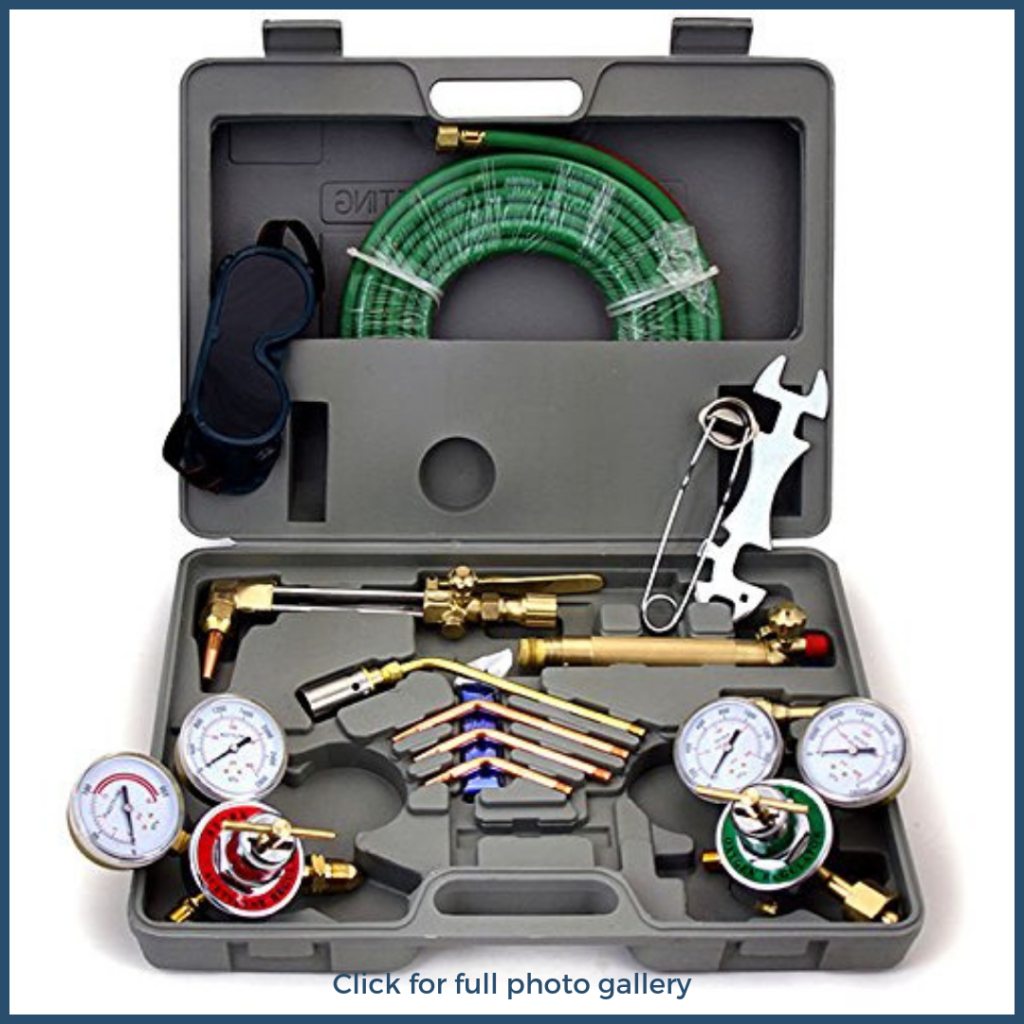
Plasma Arc Welding/Cutting (PAW)
Similarly to TIG welding, Plasma Arc Welding is based on forming an electric arc between the work materials and the electrode. In contrast to TIG, the main difference in Plasma Arc Welding is the placement of the electrode in the torch.
Due to its positioning, it can be disconnected from the shielding gas. Next, the operator can force the plasma through a copper nozzle of a plasma torch. This narrows the arc, causing it to flow out at extremely high speeds.
Depending on the project, this process can be used as Plasma Arc welding or Plasma Arc cutting.
There are two basic types of Plasma Arc welding processes, the non-transferred arc process and the transferred arc process:
- Non-Transferred Arc Process: In this type of Plasma Arc welding, the arc exists between the electrode and the constricting nozzle, which is cooled by water. In this process, there is no electrical current; the arc is separate from the materials being welded/cut. This method is applicable for things like metal plating and ceramics.
- Transferred Arc Process: In the second type of Plasma Arc welding, the arc goes between the electrode and the work materials. This type of arc welding has much higher plasma jet speeds, density, and energy. Because of this, it’s a good method for carbon welding steels, stainless steel, and nonferrous metals.
(Source: Wikipedia)
For the best Plasma Arc Cutters/Welding equipment, check out these reviews:
- 2019’s Best Plasma Cutter Reviews
- Primeweld Ct520d Review: Best Cheap Plasma Cutter
- Cutmaster 52 Thermal Dynamics Plasma Cutter Review
- LTPD 500D Plasma Cutter Review
Important Welding Safety Tips
As always, safety comes first in welding. After all, welding can be extremely dangerous if things go awry.
- First, make sure to read everything. Because equipment manuals have important warnings, reading them carefully is a great way to prevent accidents.
- Second, invest in the best welding gear. This includes the best auto-darkening welding helmet, gloves, glasses, jacket, and shoes. And of course, make sure your skin is covered up to protect yourself from the heat.
- The third most crucial welding safety tip is to be mindful of the environment. In other words, make sure the area is clean, tidy, and well-ventilated.
Hyperbaric/Underwater Welding
Generally, Hyperbaric welding is any kind of welding that happens at elevated pressures. Typically this is underwater, but not always. When it’s underwater, it’s called “wet welding,” and “dry welding” when it happens in a positive pressure enclosure.
- Positive pressure enclosures can also be called “hot work habitats” or “welding habitats.”
- Applications include ship building/repair, pipelines, and work on offshore oil platforms.
- Typically, hyperbaric welders are working with steel.
- In contrast to most types of welding methods, underwater welding requires special certification from one of the top underwater welding schools in the USA.
As you might imagine, underwater welding is rather risky. For information regarding underwater welding death rates and reasons why underwater welding is so dangerous, check out The Most Dangerous Underwater Welding Mistakes & How You Can Prevent Them.
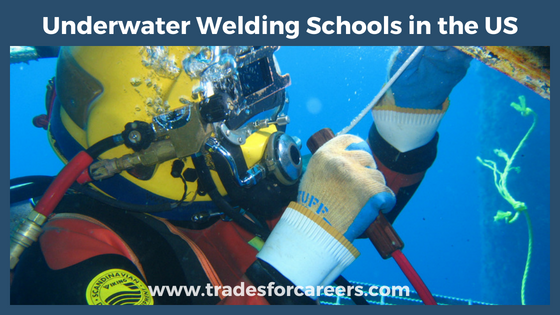
Soldering vs Brazing
Like the different kinds of welding methods, soldering and brazing both involve the connection of raw materials. However, operators use lower temperatures. (Typically, this is below 850 degrees Fahrenheit/450 degrees Celsius.) Soldering implements a filler metal, or “solder.” In this process, operators heat the solder and attach each piece of metal to the solder.
In contrast, brazing uses hotter filler metal. Frequently, operators use a liquid flux material is utilized to blend the pieces together more easily. One advantage of brazing is that it produces a stronger structure than does soldering.
For the best soldering and brazing equipment, check out these Amazon Best Sellers:
- Vestar AC222 Soldering Iron Kit
- X-Tronic Digital Display Soldering Station
- Porter Cable 1500 Watt Heat Gun
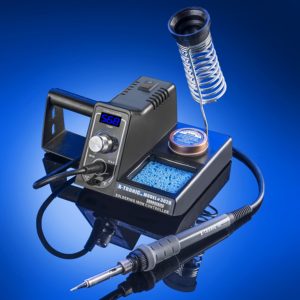
Types of Welder Certifications
So, what exactly is welder certification and why is it important? Welder certification is something you’ll receive when you pass a number of tests designed by the American Welding Society (AWS). AWS’s mission is “Advancing the science, technology, and application of welding and allied joining and cutting processes worldwide.”
At this time, AWS offers 11 types of welder certifications:
- Certified Welder
- Welding Inspector
- Associate Welding Inspector
- Senior Certified Welding Inspector
- Welding Educator
- Radiographic Interpreter
- Welding Supervisor
- Robotic Arc Welding
- Welding Sales Representative
- Reciprocity Program
- Welding Engineer
Different Types of Welding Jobs
If you want to become a welder and you also like lots of choices, you’re in luck! Because there are many, many different types of welding jobs available. Also, the welding employment outlook is great, looking ahead as far as 2026.
Here’s a list including various types of welding careers available to you:
- Boilermakers
- Pipefitters
- Automotive Welders
- Sheet Metal Workers
- Fabrication, Production, & Manufacturing Welders
- Structural & Pressure Vessel Workers
- Welding Inspectors*
- Commercial Diver
- Diving Medical Technician
(*Source: Calumet Welding Center)
Final Thoughts
Now that we’ve hopefully answered the question “What are the different kinds of welding?“, we hope you’re ready to take it to the next level. Whether that’s enrolling in a welding training program near you, applying for a new welding job, or simply investing in some kick ass new welding equipment, we know you’ve got it in you.
Embrace the wonderful world of welding today!
Visitors who liked “The Different Kinds of Welding Processes, Jobs, & Certifications” also read:
The Different Types of Welding Machines & When to Use Them: First Time Buyer’s Guide
Beginner’s Guide to Different Types of Welding Rods & Electrodes
Arc Welding Basics, Tips, & Techniques for Beginners

